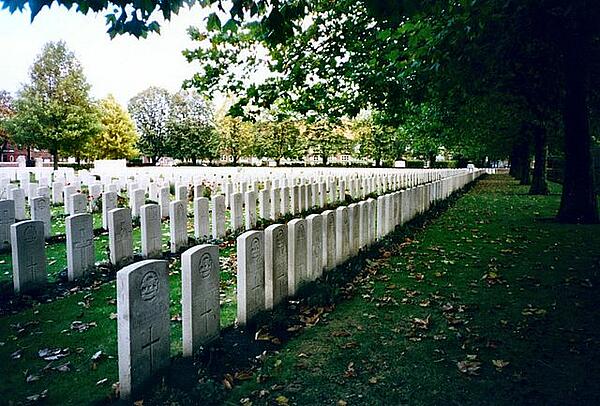Commonwealth War Graves Commission
The Commonwealth War Graves Commission (CWGC) was founded by Fabian Ware and carries out work across 150 countries taking care of war graves and ensuring the memories of men who lost their lives in the war are honoured appropriately.
Currently, the CWGC is undertaking a 28-year project that will see it re-engrave and freshen all the headstones that it looks after, which - for World War One alone - equates to around 1.3 million names being engraved on headstones or memorials.

Sir Reginald Blomfield, Sir Edward Lutyens and Gertrude Jekyll, some of Britain’s most prominent designers and architects, were tasked with designing many of the Commonwealth cemeteries of World War One, and there were more than 1,200 built in France and Belgium alone. In total, 559 were built after World War Two.
All of the headstones in the World War One cemeteries built on the Western Front are made of Portland stone and the original inscriptions on them were engraved to a depth that allowed them to be read at two paces. The CWGC also allowed families, for a small fee of 3.5 pennies a letter, to add an extra inscription at the bottom of their relative’s headstone.
The person in charge of the British Red Cross unit at the start of the First World War was Fabian Ware, who quickly realised that modern warfare made it easy for graves to be lost to posterity. He began to record the whereabouts of as many graves as he could and he was given official recognition by the War Office as he undertook this task.
By 1917, the Imperial War Graves Commission had been established with a Royal Charter, with the Prince of Wales acting as President. After the war, the Commission made the decision that no body would be repatriated to the UK and that there would be no private memorials as only the rich would have been able to afford both these luxuries. Additionally, the Commission decided all graves should be built equal, regardless of rank.
The work that went in to building all the cemeteries was so enormous that it wasn’t completed until 1938. However, the time spend constructing each cemetery meant significant work went in to making sure each one was completed to a very high quality, with every cemetery featuring a large Stone of Remembrance carrying the same inscription devised by Rudyard Kipling: “Their Name Liveth For Evermore”.
MLA Citation/Reference
"Commonwealth War Graves Commission". HistoryLearning.com. 2025. Web.
